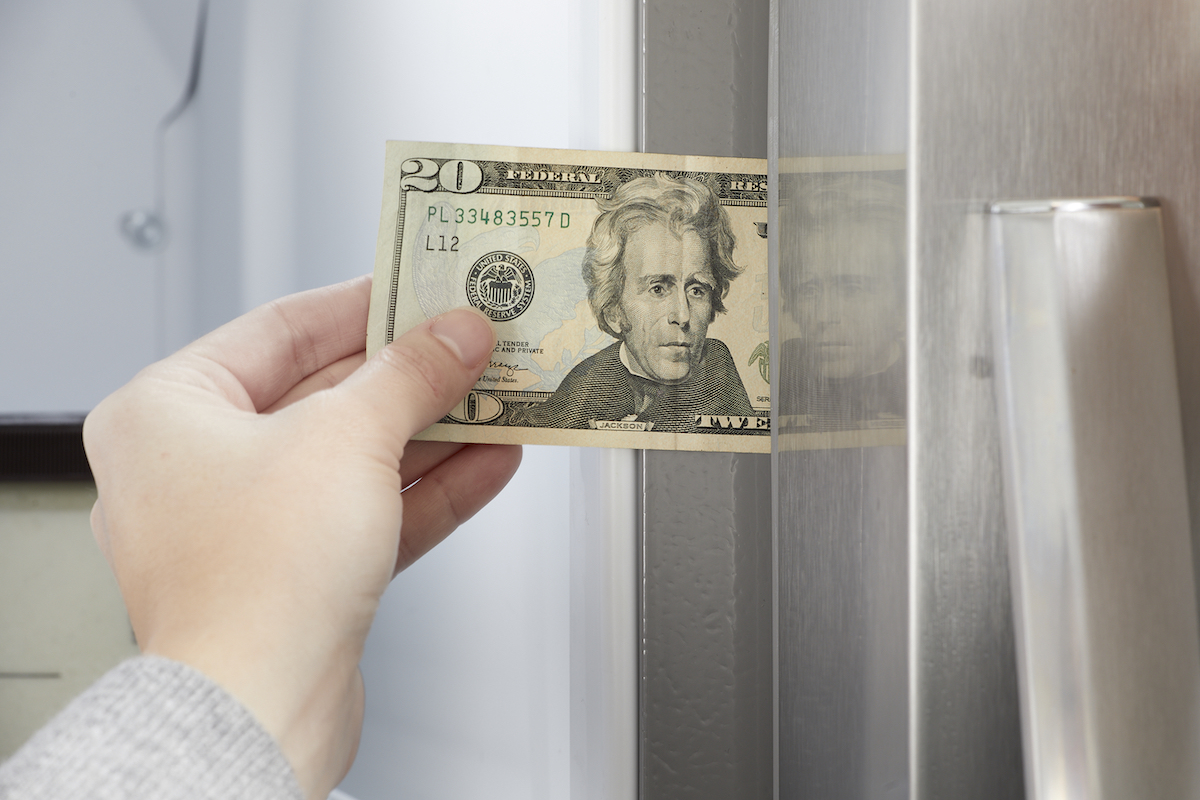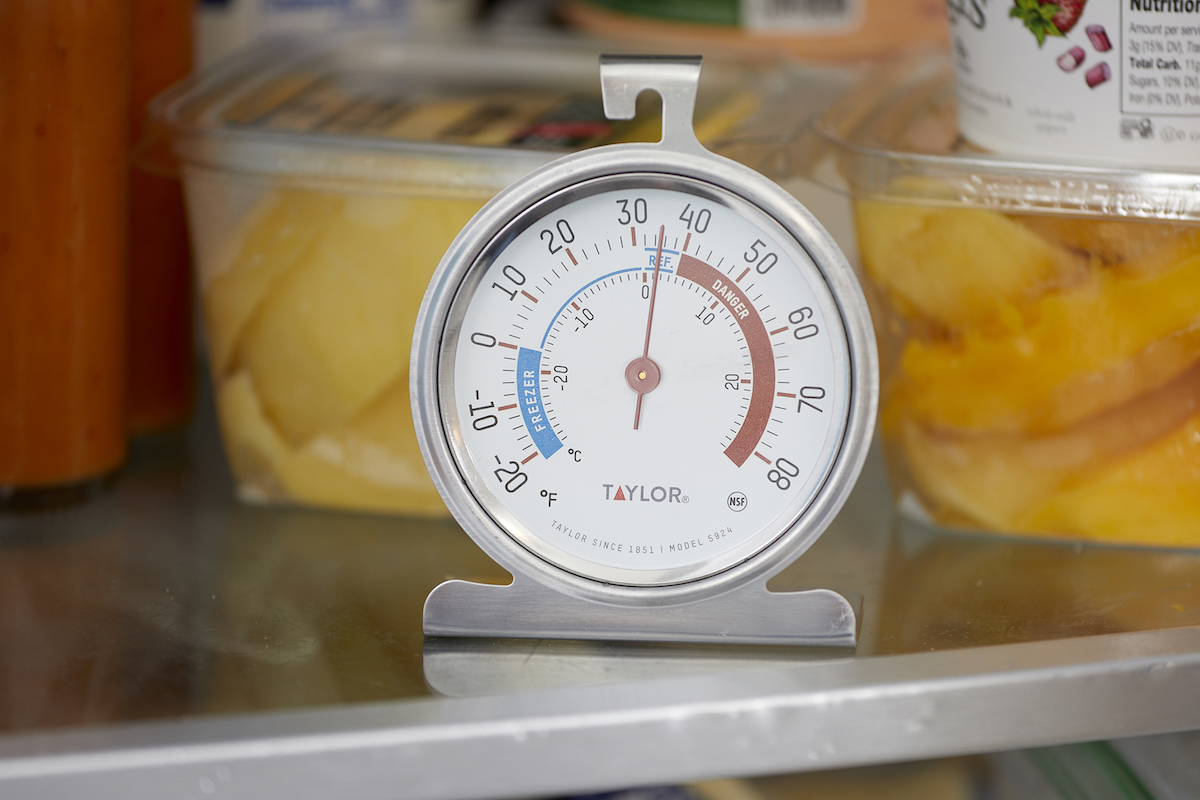We may earn revenue from the products available on this page and participate in affiliate programs. Learn More ›
Q: I’m not sure if my refrigerator temperature setting is working properly. The foods in it don’t seem all that cold, but I have the dial set at the recommended level. What temperature should a refrigerator be?
A: This is a very good question, and a very important one as well. Properly setting your freezer and fridge temperatures helps ensure that foods are kept safely chilled for storage. If these appliances aren’t set to the right temperature, the foods you store won’t remain cold enough, allowing the potential for bacteria to grow. When more bacteria grow, the chances of someone getting a foodborne illness after consuming one of the items in question increases significantly. If your freezer or refrigerator is not cooling properly, it could be a sign that you need to replace it. However, it could also mean you just haven’t selected the proper temperature settings.
What temperature should a refrigerator be?

The Food and Drug Administration (FDA) recommends keeping refrigerators set at or below 40 degrees Fahrenheit. The reason that this is the recommended normal refrigerator temperature range has to do with something known as the “danger zone.” As the United States Department of Agriculture explains, the danger zone is the temperature range between 40 degrees and 140 degrees Fahrenheit. When the temperature of a food item falls within this range, conditions are ideal for bacteria to multiply very quickly. In fact, they may even double in number every 20 minutes.
The ideal refrigerator temperature is between 35 degrees and 38 degrees Fahrenheit. Setting your fridge within this range will help you steer clear of the danger zone by providing a little bit of wiggle room.
What temperature should a freezer be?

According to the FDA, the ideal freezer temperature is 0 degrees Fahrenheit. Temperatures this cold will preserve food items until they are defrosted and cooked. Setting the appliance to 0 degrees Fahrenheit also helps to ensure that bacteria is not able to grow, keeping the food safe for long-term storage.
The normal freezer temperature recommendation from different manufacturers may vary slightly. Some recommend a range between 0 degrees and 5 degrees Fahrenheit, but sticking as close to 0 degrees Fahrenheit will be the safest option for food safety and preservation. Keep in mind that these temperature recommendations apply to various types of appliances, including chest freezers, upright freezers, and mini freezers.
Use an appliance thermometer to measure fridge temp and freezer temperatures.

Maintaining the ideal cooling and freezing temperature in your appliances is essential for food safety. However, many fridge and freezer models do not have a thermostat to tell you what the exact temperature is. They often just have a dial with a few setting options, such as 1 through 5 or “cold, colder, coldest.” Even models with a built-in thermostat may not be 100 percent accurate.
Using an appliance thermometer can help you monitor the fridge temp and the freezer temp to make sure that your food remains safe. If you notice that one of the appliances is a bit warmer than it should be, then you can turn the dial to a cooler setting or take other steps as needed to keep your food cool.
Our Recommendation: Pecula Refrigerator and Freezer Thermometer (2-Pack) at Amazon for $6.99
Pecula’s appliance thermometer has a color-coded, easy-to-read dial to help you monitor the temperature of your fridge and freezer. You can hang it on a shelf using the integrated hook, or place it on a fridge shelf.
Improve temperature control with by using and maintaining your appliances properly.

Refrigerators last about 10 to 15 years on average, while standalone freezers typically last between 12 and 20 years. Regardless of whether you have an older appliance or one that was recently purchased, using and maintaining it properly can help with both extending its lifespan and ensuring optimal temperature control. Below are a few tips to help you keep your freezer and fridge temps right where they need to be for optimal food safety:
- Replace faulty seals. Periodically check the door gaskets on your refrigerator and freezer; one easy way to do this is close the door of the appliance on a dollar bill. If you can pull the dollar away from the gasket without resistance, the door seal isn’t tight enough. If the door are not sealing properly, then cold air is escaping. This means that the fridge or freezer may be working harder than necessary to maintain the set internal temperature, or that the temperature inside has already risen above where it should be. If you see any signs of cracking, deterioration, or pulling away from the sides of the unit, it is time to replace the seal. Fortunately, this is a relatively simple DIY project that you should be able to complete without calling in help.
- Clean the coils. Keeping the coils on the fridge or freezer clean can help it work more efficiently and maintain the desired internal temperature. Depending on the specific fridge or freezer you have, the coils will either be along the back side of the appliance or across the bottom of the front side. To access the coils, you might need to remove the plate or panel that is covering them. Once you’ve located the coils and uncovered them, you can clean the refrigerator coils using the brush attachment of a vacuum or a dusting brush. Aim to complete this task at least once a year.
- Keep the amount of time the doors are left open to a minimum. Every time you open the fridge or freezer, cold air escapes and the internal temperature rises. The unit then has to work harder to bring the temperature back down to where you have it set. Limiting how frequently you open the doors and how long you leave them open can help keep the amount of cold air that is able to escape to a minimum.
- Keep the fridge and the freezer well-stocked. A full, well-stocked fridge and freezer is good for more than providing you with lots of options for meals and snacks. When the unit is full, it is able to operate more efficiently, helping it maintain the desired temperature. If you don’t need that much food or won’t have a chance to get to the store to restock it, you can even add pitchers or storage containers full of water to fill the voids.
- Avoid freezing food that is still hot. If you have leftovers from dinner that you want to freeze, let them cool down before putting them in the freezer. Otherwise, the heat from the food can warm up the temperature inside the freezer so much that food items may enter the danger zone. Instead, allow the item to cool completely before freezing it.


